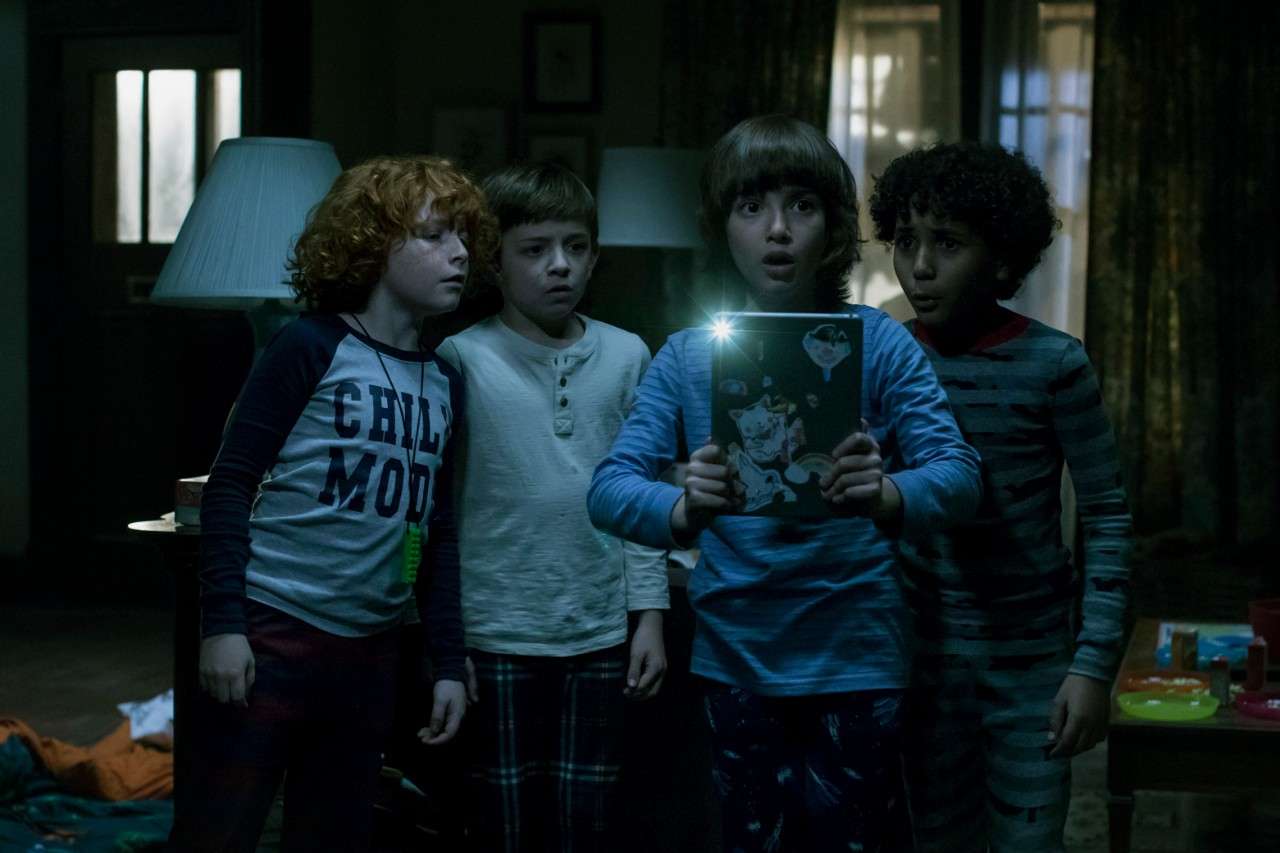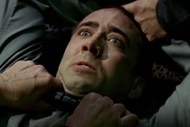Create a free profile to get unlimited access to exclusive videos, sweepstakes, and more!
Come Play Is The Babadook with Smartphones, and It Works
Let's take a look back at one of 2020's most intriguing horror releases.

Like a lot of films in 2020, Come Play never quite found the audience it deserved, at least not theatrically. It did well enough, arriving over the Halloween season of the first pandemic year and earning back its budget and then some. But looking at the film now, it's easy to imagine a world where it would have done much better in the right time and place.
What that means for us horror fans, of course, is that it's time to take a look back at the film and what it has to offer, and thankfully it's sitting on Peacock ready for you to stream at the push of a button. While it might not rank among the recognized new classics of the 2020s so far, what you'll find if you go watch the film is a clever, chilling, and ultimately satisfying tale of monsters in the closet with a modern tech twist that makes it play like The Babadook with smartphones. And believe it or not, that premise works.
For More Horror on Peacock:
Hidden Horrors of Peacock: Daniel Isn't Real
The Best Horror Movies on Peacock for April 2024
Come Play is a Horror Movie About Loneliness
Why Now Is a Great Time to Revisit Come Play, Now Streaming on Peacock
Adapted by writer/director Jacob Chase from his short film Larry, the film follows Oliver (Azhy Robertson), a non-verbal young boy who communicates through a speech app on his phone. Oliver's autism is fodder for the bullies at his school, and a source of concern for his mother Sarah (Community's Gillian Jacobs) and father Marty (John Gallagher Jr.), who fight over the apparent unevenness of the burden of raising their son. During these fights, Oliver retreats into his device, using it to play Spongebob Squarepants episodes for comfort. But one night, the device doesn't behave the way it normally would.
With the aid of a children's picture book delivered in e-book form on Oliver's devices, a monster named Larry introduces himself to the boy, explaining that he uses "windows" (i.e. smartphones, tablets, televisions) to see through to the human world, in search of a friend. Eventually, Larry's story tells us, those windows will become "doors," and he'll step through into our world and claim his friend. It's a bit like a dark fairy tale, at least until Sarah realizes that Larry's not just a benevolent weird creature in search of a friend. He's out to take Oliver, and he'll go through as many people as he has to to get him.
The first thing you notice about this concept is, of course, the way the film plays with smartphones, tablets, and other devices as a means of entry for a monster. It's certainly not the first film to take such high-tech measures when it comes to exploring the horrific, but in a world where so many filmmakers are coming up with excuses for ditching smartphones to simplify the plot, it's notable to see Come Play embrace them. The film is usually at its creepiest when Chase fully explores the implications of this corner of his mythology, as in a sequence where Oliver hosts a sleepover and the presence of Larry emerges through a tablet camera. That sequence, and a few others that work within the same parameters, deliver the film's creepiest moments. But the best thing about Come Play is that it doesn't stop there.
As the film goes on, its mythology around Larry gets a little murkier, but the story makes up for it by embracing the emotional stakes of the plot. This is, at its core, a story about parents fighting for the wellbeing and safety of their son, and Chase achieves emotional satisfaction by exploring that core in two key ways. One, the film emphasizes the vulnerability of Oliver without ever feeling exploitative toward autistic children. Oliver emerges as a fully formed character who can communicate with the audience through a wonderful performance from Robertson, and that raises the stakes of the film while never taking shortcuts around the way this child views the world. Two, Come Play doesn't shy away from the difficulties this family is going through, from the marital strife between Sarah and Marty, to the way Sarah worries that Oliver hates her because of the particular way they relate to one another. It's an honest, unflinching portrayal, and it culminates in the film's most disturbing and emotionally effective moment, which shouldn't be spoiled here for first-timers.
All of this means that Come Play is a horror film worthy a re-examination, particularly if you missed it during the chaos of 2020. It doesn't always work, but when it does, it's equal parts terrifying and moving.
Come Play is now streaming on Peacock.















